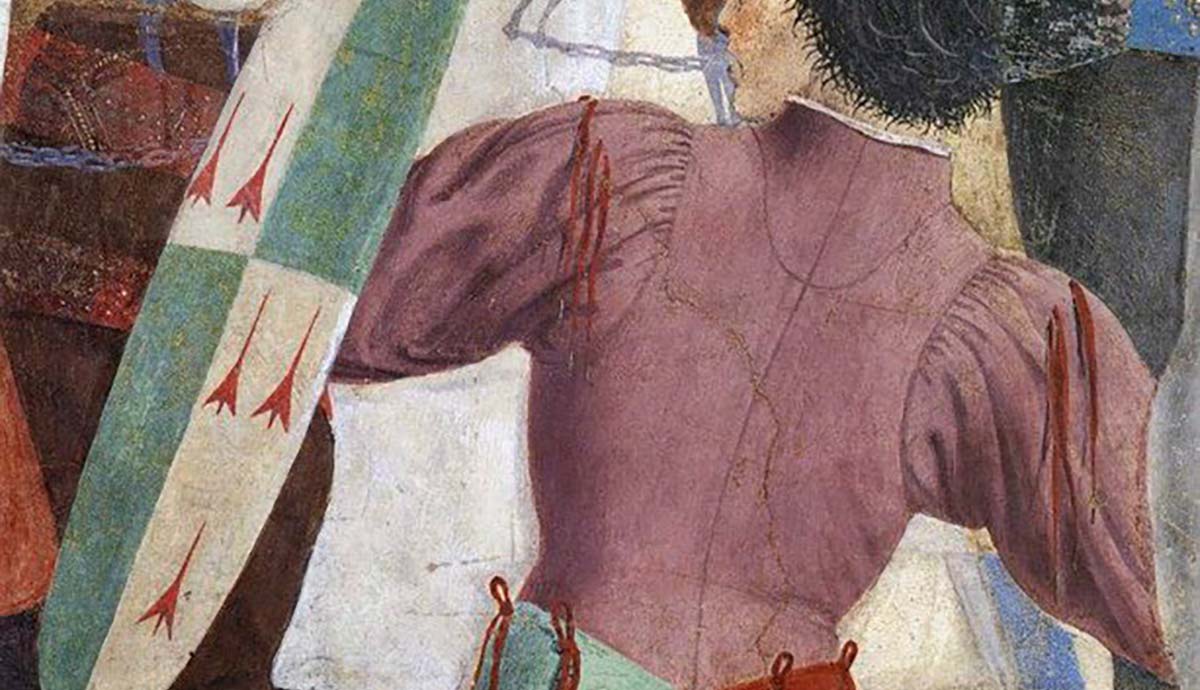
Although there are numerous examples of knights being armed in period illustrations, almost no written descriptions have survived. One notable exception is the 15th-century English treatise commonly known as "How a man schall be armyd" found in the Hastings MS. Written about 1450, it describes step-by-step how a knight would be dressed in armour before fighting in a judicial duel. The following is a transcription of the passage [Hastings MS folio 122b] in its original Middle English: He schal have noo schirte up on him but a dowbelet of ffustean ...
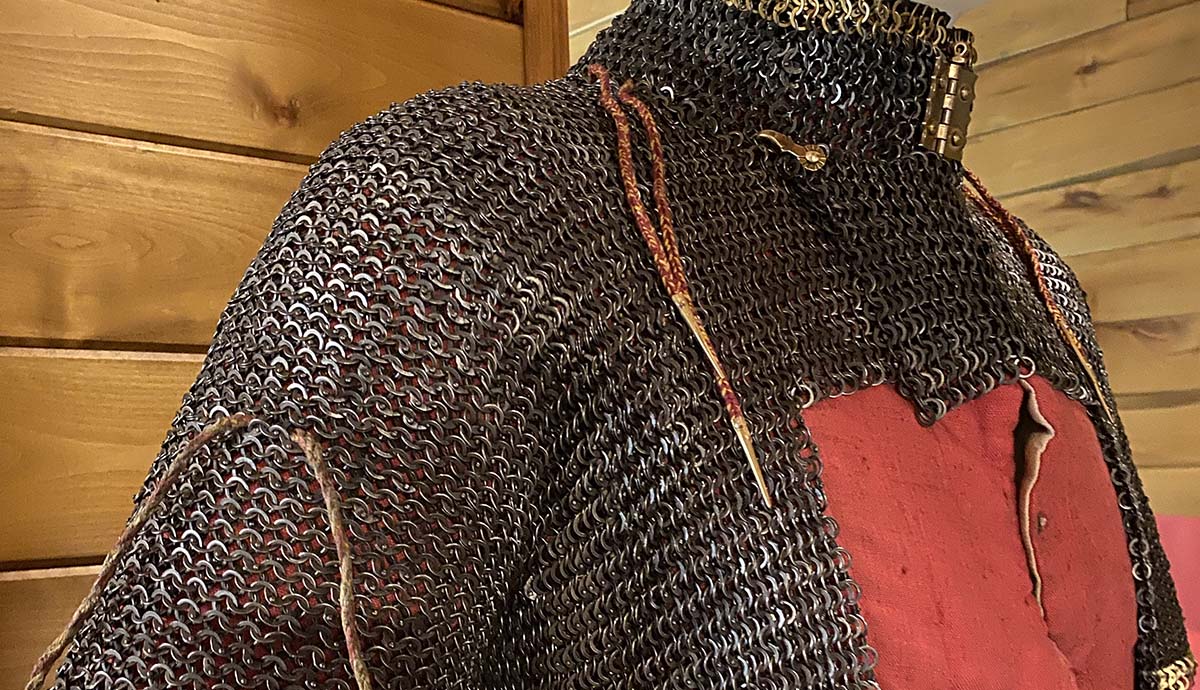
Among practitioners of historical reenactment, there seems to be a never-ending experimentation involved with wearing maille under armour. The wearer's tastes evolve; their style of armour changes; the rules governing simulated combat are updated; issues such as comfort or weight become more important with age and experience. Perhaps it is entirely a modern phenomenon, as the majority of the aforementioned are somewhat trivial, while self-preservation on the battlefield was likely the most important consideration of the medieval ...
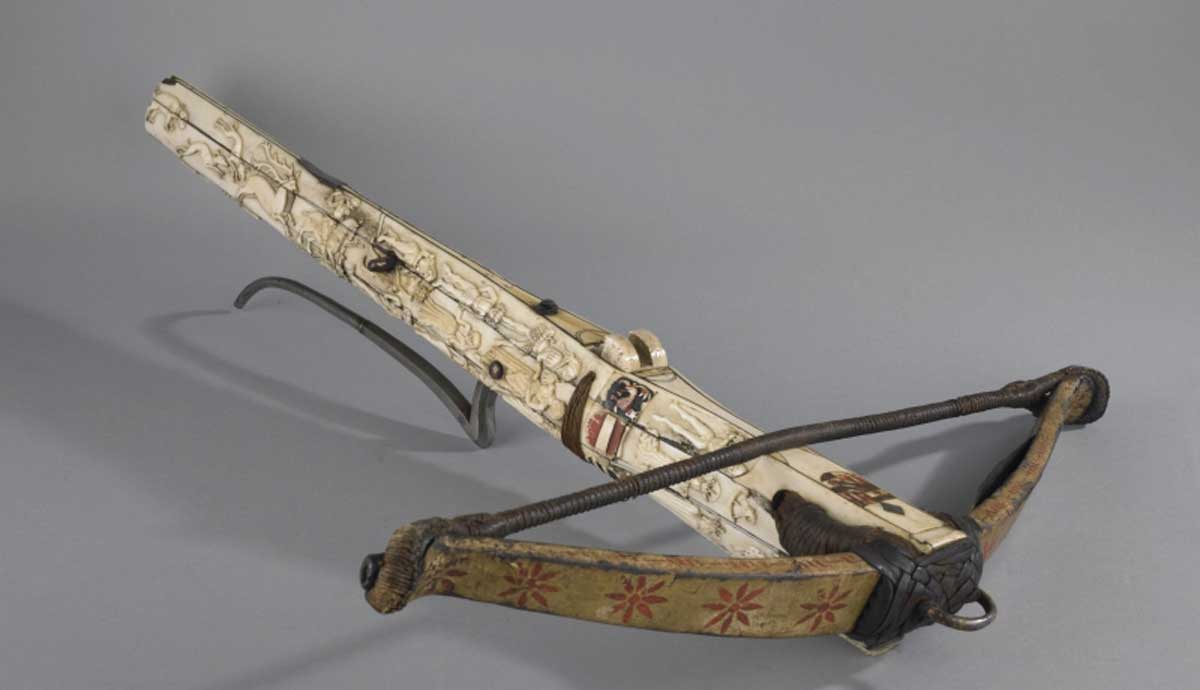
Regardless to how the crossbow was viewed on the battlefield, it was ever a high-status hunting weapon. Unlike the longbow, a crossbow could be kept fully spanned for a considerable amount of time. The crossbows of noblemen sometimes had a veneer of intricately-carved stag horn and/or elaborate patterned inlays. I recently commissioned a fifteenth-century hunting crossbow from Danilo "Tod" Todeschini of Tod's Workshop. Tod's expert craftsmanship is featured extensively in Mike Loades's bookThe Crossbow.
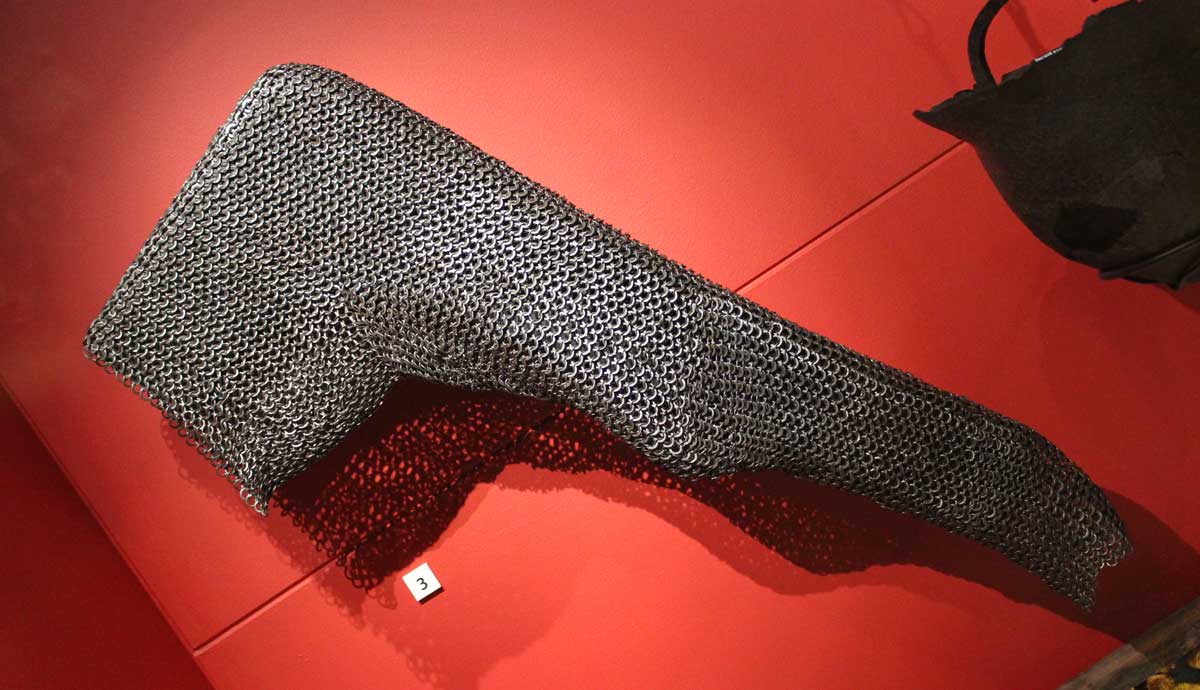
This pair of tailored mail sleeves were commissioned in 2018 and created by Nick Checksfield. Nick has been making and restoring mail since 1992. He is currently an educator at Windsor Castle but has worked in the past as a mail restorer at the Wallace Collection. Nick has also been seen as a mail subject expert in documentaries such as "Going Medieval" with Mike Loades. Nick has handled the originals in the Royal Armouries Collection at the Tower of London. They originals are constructed of 7mm riveted rings and have broad gussets ...
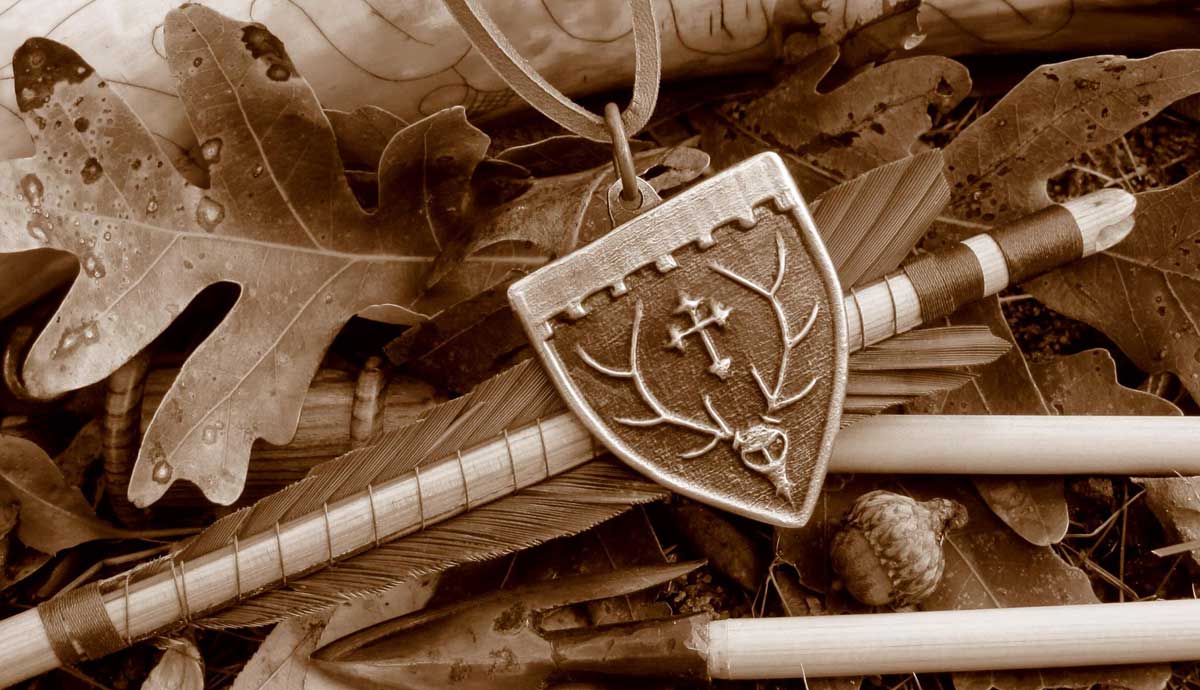
Several years ago I joined Saint Hubert's Rangers, an international, online brotherhood of like-minded individuals dedicated to the medieval hunt. Members portray mid-to-late medieval Western European hunters and attempt to authentically recreate the clothing, accoutrements, and hunting gear appropriate for their station. Rangers research all aspects of the daily lives of medieval hunters and continually strive to improve on the period authenticity of their hunting apparel and gear.
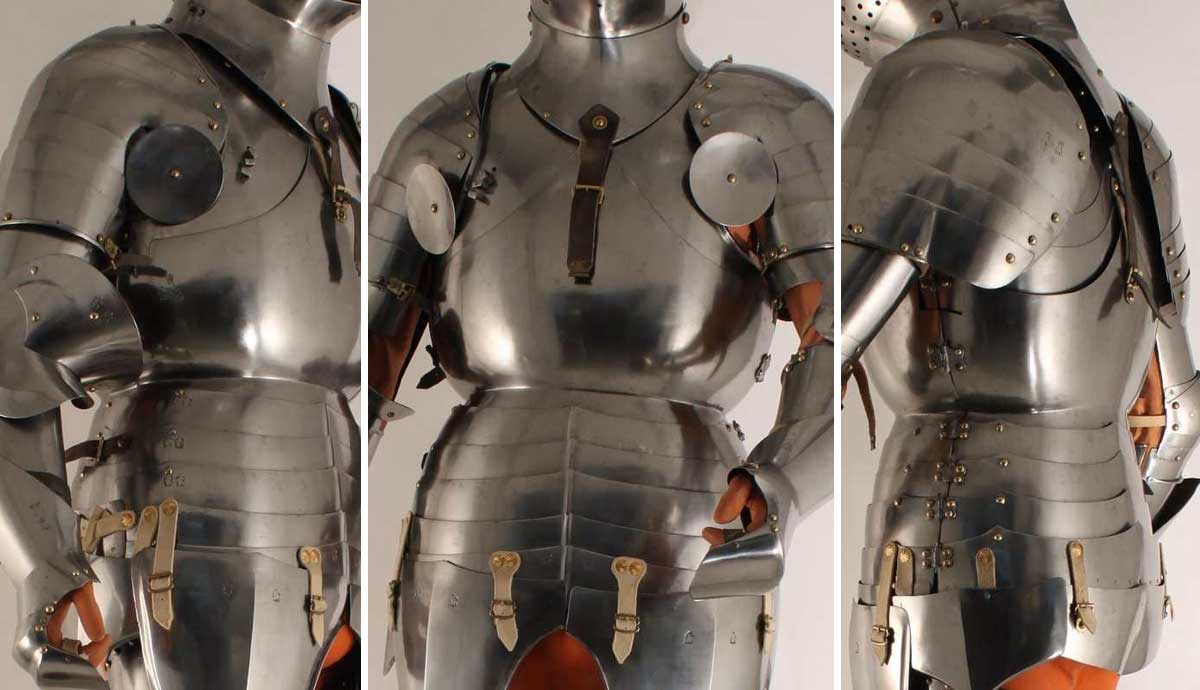
The decision to commission a new harness was finally made real in January 2015. It was important that it be as historically accurate as possible without having to pawn all of the wife’s heirlooms. It was also hoped to reproduce a complete harness rather than a composite one that had been assembled from multiple decades. That greatly reduced the number of options available. In the end, the best choice was the harness once owned by Friedrich I, Kurfürst von der Pfalz, often referred to as Frederick the Victorious ...
